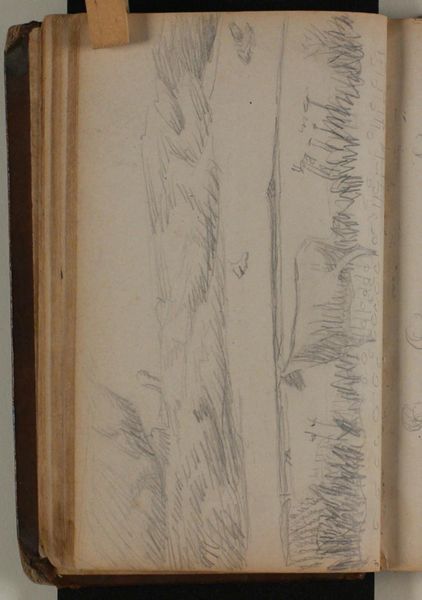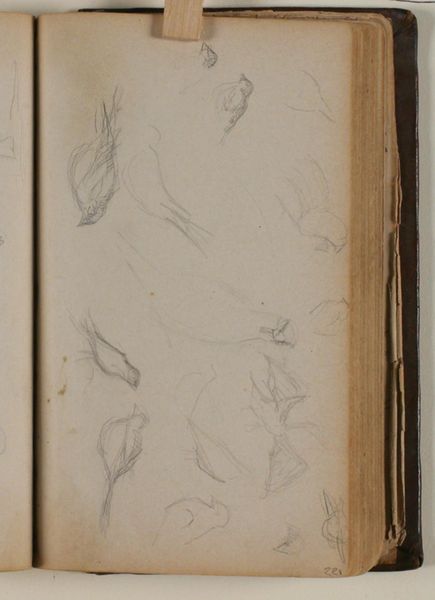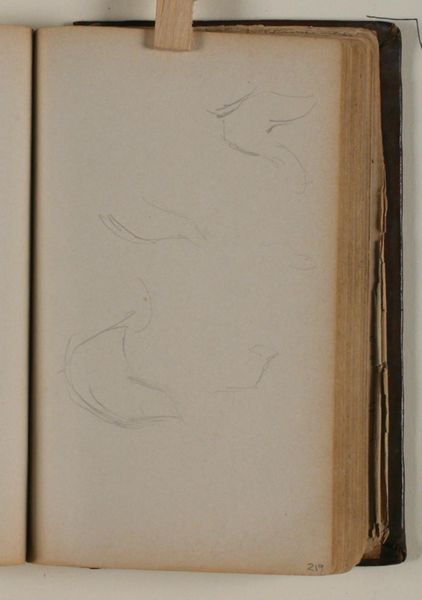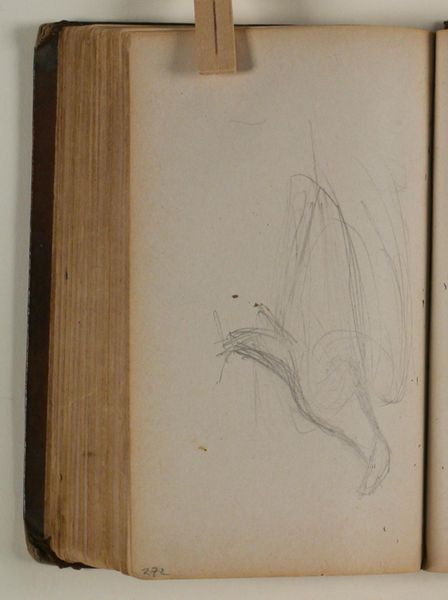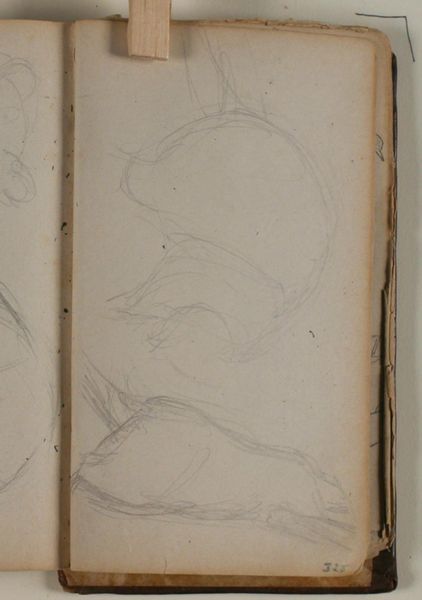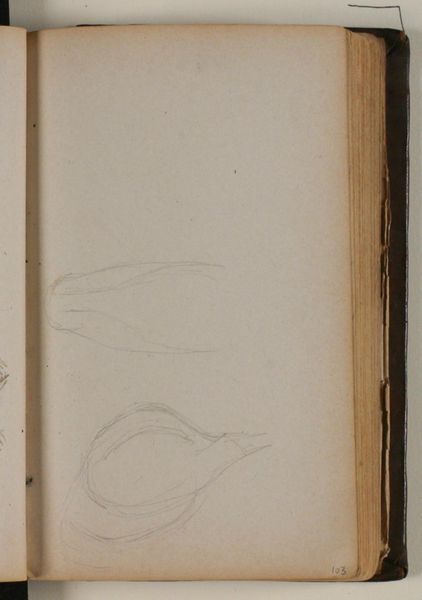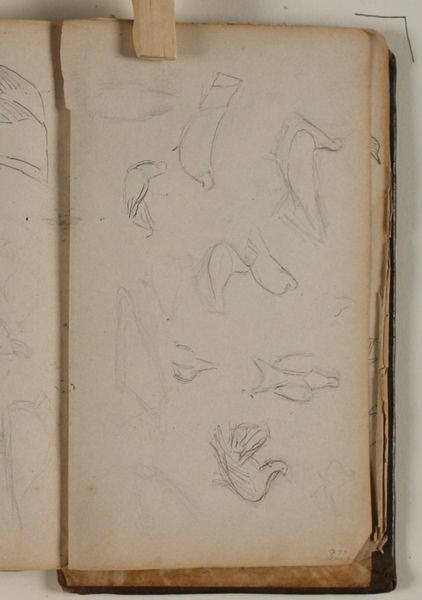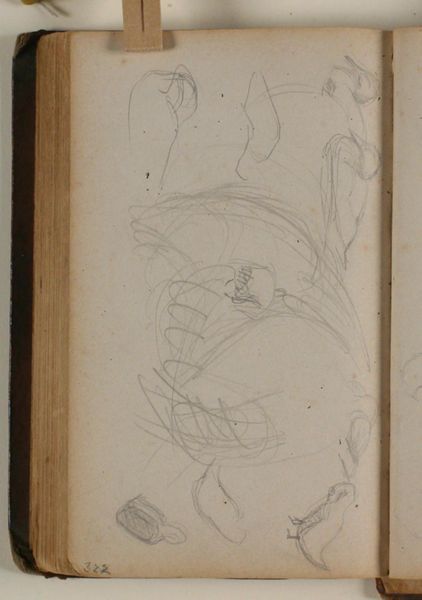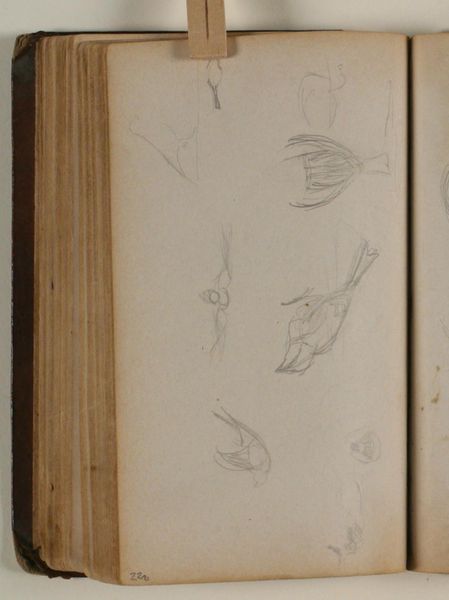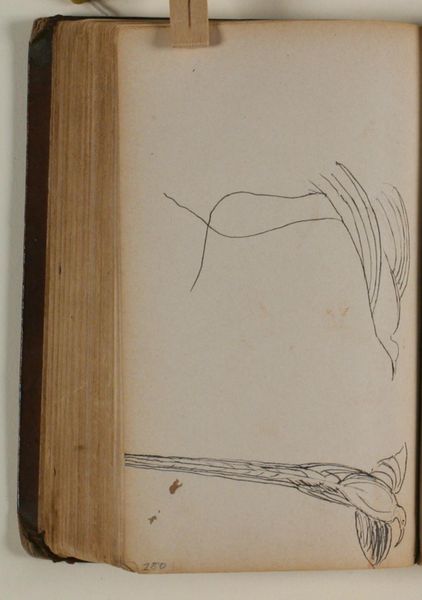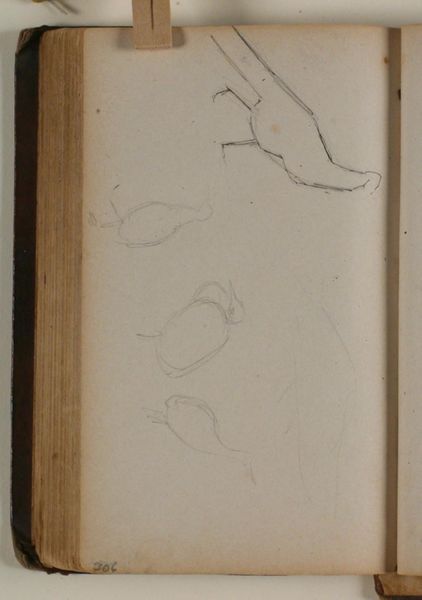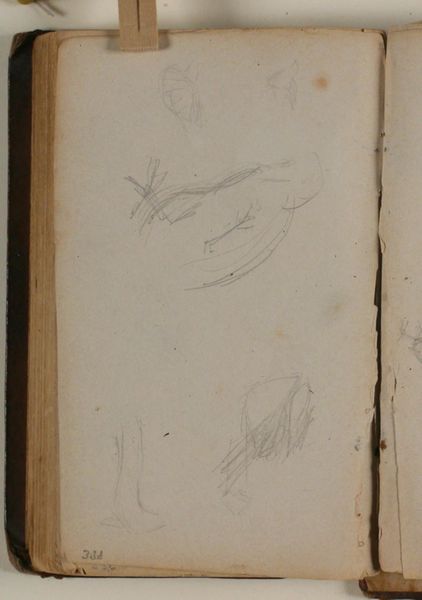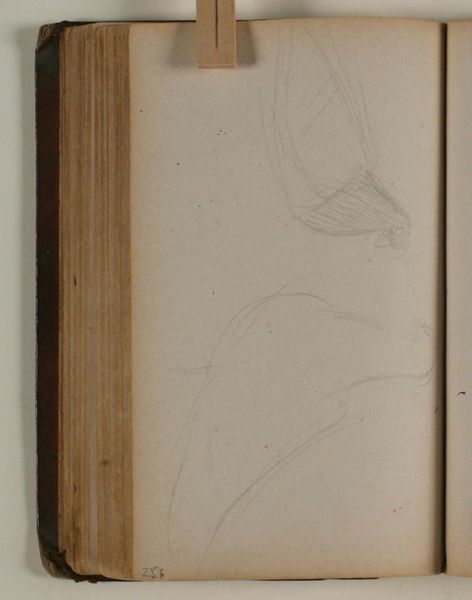
drawing, paper, pencil
#
drawing
#
organic
#
paper
#
pencil
Curator: Before us is "Studies of Eagle" by Niels Larsen Stevns. The dates associated with it, 1864 to 1941, reflect the artist's lifetime, suggesting this study could have been made at any point during his career. It is crafted using pencil on paper and belongs to the collection of the SMK, the National Gallery of Denmark. Editor: Immediately, I'm struck by the lightness of the lines, the sketchiness that evokes a sense of movement and searching. The composition is intriguing – not a finished work, but rather an exploration of form. It feels almost weightless, captured in ephemeral lines. Curator: The eagle, often a symbol of power and freedom, would certainly resonate deeply within broader cultural and historical contexts, given that the notion of “freedom” can carry different meanings for different groups of people. Editor: From a formal perspective, notice how Stevns uses the pencil to create tonal variations – from the faintest whispers of lines to slightly darker, more defined strokes. These variations suggest the play of light and shadow on the eagle’s form, defining volume and mass. Curator: These studies challenge traditional portraiture. The sketch form becomes significant, questioning power structures by not creating something majestic, and polished. How would you say this contrasts with conventional depictions of power and freedom? Editor: Well, by choosing the sketch form, Stevns emphasizes process over product, potential over realization. The dynamism of the lines resists fixity, suggesting a fluid, ever-changing concept. It’s not the concrete symbol of power we might expect, but an open exploration of its visual representation. Curator: Right. We see it less like a formal depiction meant to evoke nationalistic feeling and more as something provisional. The drawing reflects the temporal limitations of human understanding. The softness allows viewers to question rigid cultural understanding of symbols such as “eagles.” Editor: Yes, there is an emphasis on organicism that points towards broader social and historical issues related to identity. For me, what resonates most is the artist's masterful control and restraint in depicting this creature using rudimentary marks, showcasing pure talent in its rawest form. Curator: Thinking about Niels Larsen Stevns' eagle, my main takeaway concerns the role and evolution of these traditional signifiers that need to undergo constant re-evaluation when used in representational artistic works. Editor: Agreed. And, for me, I appreciate how this simple sketch encourages us to look closer at the fundamental elements of art and the transformative ability of an artist to translate what he sees onto a piece of paper.
Comments
No comments
Be the first to comment and join the conversation on the ultimate creative platform.
